[평화예술칼럼, Peace Art Column] (58) 김준기
| 제주도는 평화의 섬입니다. 항쟁과 학살의 역사를 가지고 있기에 평화를 염원하는 마음은 더욱 간절할 수 밖에 없습니다. 제주4.3이 그렇듯이 비극적 전쟁을 겪은 오키나와, 2.28 이래 40년간 독재체제를 겪어온 타이완도, 우산혁명으로 알려진 홍콩도 예술을 통해 평화를 갈구하는 ‘평화예술’이 역사와 함께 현실 속에 자리 잡고 있습니다. 이들 네 지역 예술가들이 연대해 평화예술운동을 벌이고 있습니다. 이들의 평화예술운동에 대한 창작과 비평, 이론과 실천의 공진화(共進化)도 매우 중요합니다. 독립언론 [제주의소리]가 네 나라 예술가들의 활동을 ‘평화예술칼럼(Peace Art Column)’을 통해 매주 소개합니다. 필자 국적에 따른 언어가 제각각 달라 영어 일어 중국어 번역 원고도 함께 게재합니다. [편집자 글] |
제주에서 나고 자란 청년 양동규가 개인전을 열었다. 그는 대학 졸업 후 환경운동 시민단체에서 영상과 사진 매체를 다루는 활동가로 출발하여 15년 전에 영상감독으로 데뷔를 하였으며, 10년 전부터는 사진가로 본격 활동해온 예술가이다. 그는 청년에서 중견으로 이력을 쌓는 동안 창작한 수많은 작업들 가운데 대표작들을 골라 사진집을 내고 개인전을 열었다. 이 전시 <양동규 개인전: 터>(2021.7.16.-8.5, 포지션민제주)는 풍경과 사건을 통하여 제주의 역사와 삶을 이야기해온 예술가 양동규의 세계를 가늠해 볼 수 있는 전시다. 10여년의 활동이력에도 불구하고 제주도 내에서 처음 개인전을 여는 것인데, 이는 양동규가 에술가 활동 이외에 시민단체와 예술인단체 활동에 매진하다보니 정작 자신을 챙기는 데는 소홀했던 탓이다.
제주도에서 열리는 첫 번째 개인전이니만큼 이번 전시 하나에 초기작부터 최근작까지 양동규의 시간 10년이 압축적으로 담겨있다. 넓지 않은 전시장이지만 양동규는 공간을 최대한 넓게 쓰고 있다. 시대별로 대표작들을 간추린 후 그것들을 최대한 설치미술적인 요소로 연출한 것이다. 하여 벽에 붙인 사진 뿐만이 아니고 천정에 매달아 놓은 사진이나, 구겨서 입체로 만든 사진, 벽으로부터 돌출하여 매달린 사진 등 다양한 연출 기법을 사용했다. 작품의 성향 또한 기록성과 개념성, 공간적 분절과 서사의 연결, 시각과 청각의 공감각적 조화, 과거와 현재의 공존 등 다양한 방식으로 시공간을 종횡무진하는 전시 연출을 선보였다. 하여 일반적인 사진 전시와는 다른 입체적인 작품 감상이 가능한 공간을 제시함으로써 양동규는 탈장르적인 융합 예술가로서의 자질을 충분히 보여주었다.

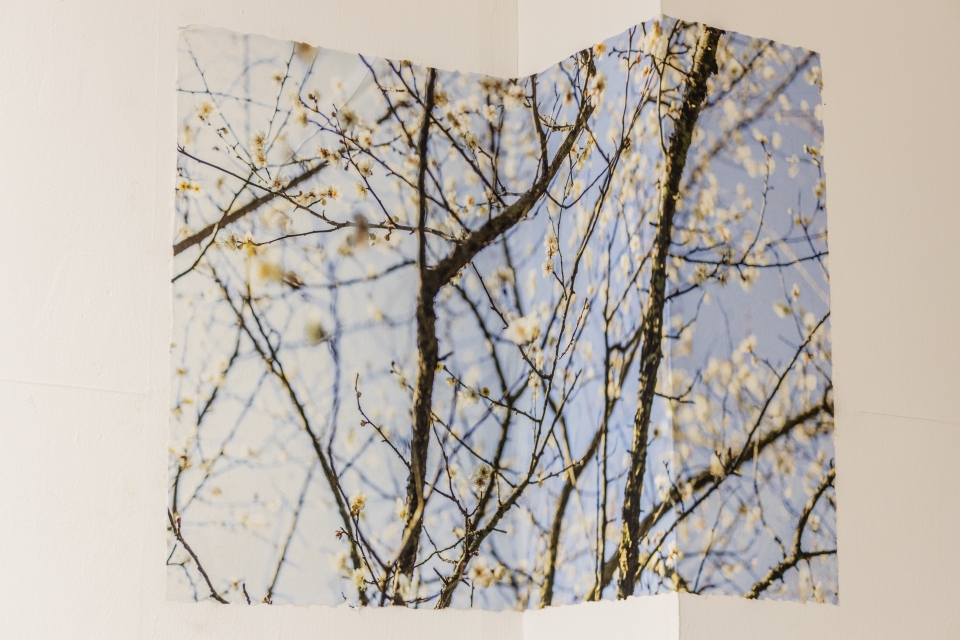
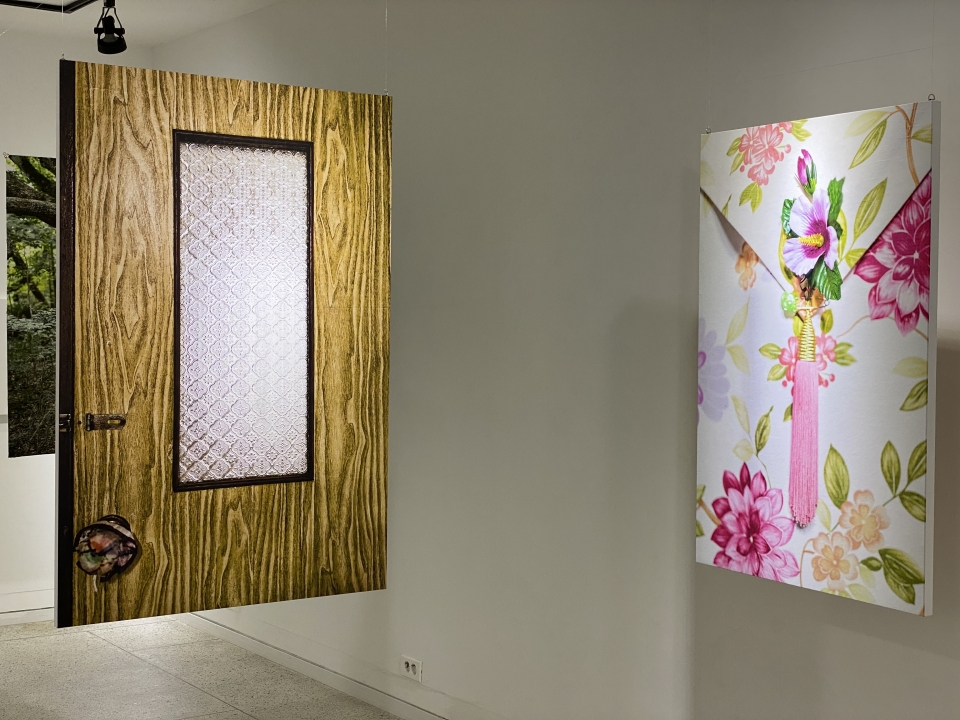
양동규 예술의 출발은 ‘학살로서의 4.3’을 살피는 일이었다. 카메라를 든 그의 시선은 제주의 땅을 향했다. 묻혀있는 진실을 발굴하는 현장에서 그는 은폐된 진실을 찾아 렌즈를 땅으로 지향했다. 학살터를 찾아 유해를 발굴하는 현장을 담은 ‘학살현장 유해발굴’ 연작들은 양동규 사진의 핵심을 간파할 수 있는 지름길이다. <빈 땅>(2018-21)은 정뜨르비행장 학살유적지에서 유해발굴을 위해 사전 측량한 현장을 찍은 사진이다. 30컷으로 이뤄진 3미터 길이의 대작으로서 측량 후 결과를 얻지 못한 학살터 발굴 현장을 담았다. 풀밭 뒤에는 발굴 후의 ‘빈 땅’을 찍은 사진이 있다. 수십 년 동안 묻혀있던 땅을 걷어내고 은폐된 역사를 드러내는 순간을 기록한 사진들이다.

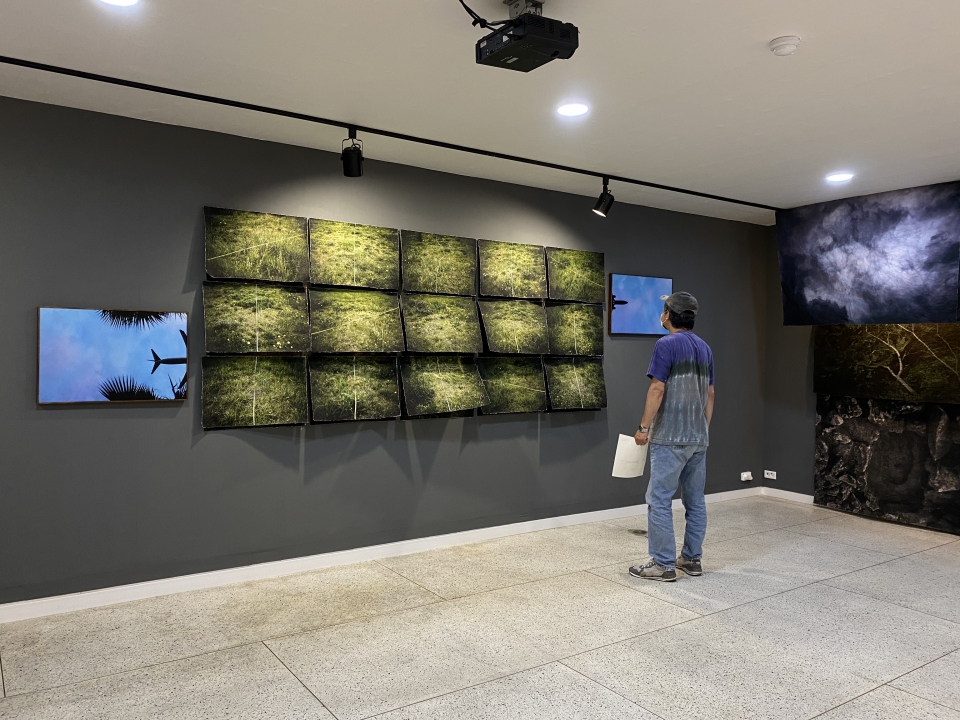
그는 <빈 땅>의 좌우에 비행기 사진 두 점을 걸어놓는다. 제주공항의 빈 땅 위로 날아드는 비행기를 담은 사진 <시조새(始祖鳥)>(2017)이다. 이 사진은 김수열 시인의 <정뜨르비행장>이라는 시에서 착안한 작품이다. 김 시인은 ‘하루에도 수많은 인파가 시조새를 타고 내리는 지금, 저 시커먼 활주로 밑에 수백의 억울한 주검이 있다’고 했다. ‘공항에 착륙할 때마다 발을 드는 것 밖에는 할 일이 없다‘고 하는 시인의 마음을 생각하며, 그는 정뜨르 발굴 현장의 사진 옆에 시조새 두 마리를 얹어 놓는다. 한반도와 동아시아 사람들이 관광지 제주를 방문할 때마다, 그들의 몸이 제주에 닿을 때마다, 그 아래 이름 없이 묻힌 수없는 죽음들이 다시 한 번씩 짓눌리고 있다는 이 뼈아픈 서사를 기억하고자 함이다.
이렇듯 기록 사진으로 촬영한 인물이나 사물, 풍경 등을 대형 프린트로 전시장에 제시하는 양동규는 사진이라는 기록물에 담긴 아카이브 요소를 자신의 예술적 메시지로 끌어들이며, 전유의 미학을 구사하는 개념미술가이다. 그가 인물과 사물을 전유하는 방식은 시각언어 고유의 콘텍스트와도 맞닿아있다. 인접과 소격, 조화와 대비, 견제와 균형, 나열과 교차 등 갖가지 요소에 걸쳐있는 그의 이미지 전유는 양동규의 예술을 사진을 넘어선 사진, 다큐를 넘어선 다큐로서 자리매김하게 하는 데 결정적으로 기여하고 있다. 이렇듯 기록 사진 작업의 현장에서 예술 작품을 길어올리는 양동규는 문자언어의 서사적 규정을 훌쩍 넘어, 직관적인 상상력이라는 시각언어의 서사구조를 매우 창의적으로 구사하고 있다.
양동규는 편집과 배치의 미학으로 서사를 확장한다. 멀찍이서 넓게 담아내는 풍경사진들이나 바짝 들이대고 좁게 끌어들이는 현장 사진들 모두 대상을 카메라 렌즈 속으로 끌어들이기는 마찬가지다. 문제는 끌어들인 대상을 프린트라는 결과로 뽑아낼 때의 편집술과 배치술에 따라 독해의 차별성이 발생한다는 점이다. 물론 작가의 성향에 따라서는 끌어들이는 방법 자체에 초점을 맞추는 경우도 많지만, 양동규의 사진은 입력이나 출력의 방법론에 초점을 맞추기보다는 무엇을 담을 것인가에 초점을 맞춘 후, 대상물들을 어떻게 편집하고 배치할 것인가에 초점을 맞춘다. 이렇듯 양동규는 ‘무엇을 찍어서 어떻게 뽑아내느냐’의 문제에 그치지 않고 ‘어떻게 보여줄 것인가’에까지 관심을 집중한다.
양동규 사진의 큰 틀이 흔적으로서의 풍경에서 나온다면, 개념미술적 요소는 그 틀을 보완하거나 대체하는 또 하나의 틀이다. 그것은 존재하는 사물이나 풍경을 포착하는 ‘찍는 사진(Taking Photo)’과 사물이나 상황을 연출하여 그것을 포착하는 ‘만드는 사진(Making Photo)’의 경계선 상에 존재한다. 흔히들 전자를 정직한 기록 사진과 연결하고 후자를 인위적인 연출 사진과 등치하는데, 양동규의 레이어는 기록과 연출을 넘어서는 개념미술로 확장한다. 그는 기록과 연출 두 가지 방법 모두를 자유자재로 구사하는데, 이는 앞서 말한 편집술과 배치술의 작동과도 긴밀히 연결된다. 4.3희생자 유해발굴 현장의 기록 사진을 개념미술적인 설치미술로 재구성하는가 하면, 역사적 오브제와 무정념의 상황들이나 일상의 사건들을 제주4.3의 서사로 연결하고 있기 때문이다.
양동규는 4.3 희생자와 유족들의 생활공간을 통하여 그들의 삶을 반추한다. <고립된 평안> 연작 23점은 4.3을 겪은 생존희생자들을 방문하여 인터뷰 하면서 그들의 거처를 카메라에 담은 것들이다. 그는 4.3으로 남편을 잃은 자신의 할머니가 지녔던 공간적 아우라를 10여명의 희생자/유가족을 만나면서 다시 접했다. 사진가로서 4.3의 현장에서 일해온 그는 희생자들과 유가족들을 만나서 인터뷰를 하고 다큐멘터리 영상과 사진 작업을 하고 있다. 아직은 작품으로 발표하지는 않지만, 언젠가는 인물 다큐 작업을 할 예정인데, 지금까지는 실내공간의 사물들을 통해서 그들의 삶을 간접적으로 성찰하는 데 주안점을 두고 있다. 이번 전시를 통해서 발표하는 생활공간 사진들은 무심한 듯 예리하게 삶의 흔적들을 포착한 이미지들이다.

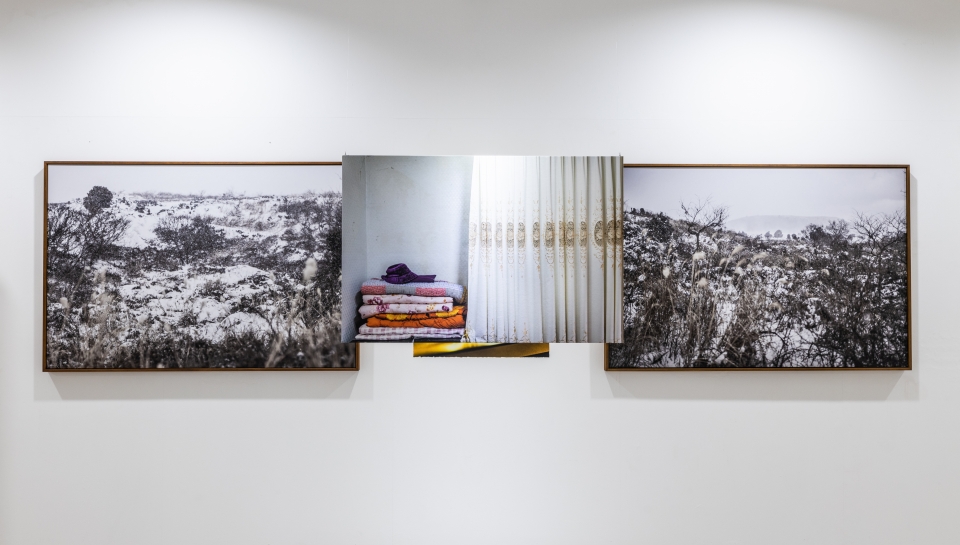
식물학자가 풀꽃을 채집하듯 희생자들의 실내 공간을 카메라에 담은 양동규는 4.3을 겪어낸 사람들의 삶의 편린들을 주섬주섬 담아내는 이미지 수집가이다. 벽면과 천정, 소파, 바닥, 과일, 창문, 이불, 커튼, 옷장 형광등, 거울, 거울에 비친 표구, 손자들의 문구와 종이학, 벽지 등 다양한 이미지들을 담았다. 이러한 섬세한 정서적 연대를 통하여 그는 4.3이라는 사건이 해방정국에서 벌어진 반분단 운동으로서 역사적 의미를 가진다는 점뿐만 아니라 20세기 중반 한반도 남단의 제주도에서 태어나 한 생을 꾸려온 사람들의 신산하면서도 애잔한 삶의 여정으로서도 존재하고 있음을 성찰하고 있다. 4.3의 흔적을 추적하며 제주 풍경을 담아온 양동규가 이렇듯 사물 이미지에 집중하는 것으로 보아 향후 작업의 향배를 일부나마 가늠할 수 있다. 그 변화의 단초로 주목할 만한 흐름이 다음의 작업에 들어있다.
2018년 이후 그는 새로운 평화의 서사를 찾아 나섰다. 오키나와, 타이완을 답사하면서 그는 동북아시아에 드리워진 전쟁과 평화의 양면을 들여다보았다. 제주도 강정은 해군기지를 만드는 과정에서 국가 폭력에 노출되었으며 마을 공동체의 붕괴를 경험했다. 게다가 동북아시아의 군사적 전략 요충지로서 잠재적인 전쟁 위협에 노출된 상황이다. 오키나와의 헤노코는 미군의 주둔지로 뒤덮인 섬에 새롭게 건설하는 거대한 해군기지로서 길고 긴 평화운동의 의제 현장이다. 타이완의 킨먼은 중국대륙과 실재 격렬한 전투를 벌이기도 했던 양안의 대립 현장이다. 제주 강정과 오키나와 헤노코, 타이완의 킨먼에서 포착한 섬 사진 연작은 동북아시아에서 도드라지게 전쟁의 위협을 안고 있는 ‘섬의 불의 고리’에서 채집한 평화 의제의 작품들이다.
오키나와와 타이완을 잇는 동북아시아 국제 정세는 제주도의 역사와 현실과도 긴밀하게 연결된다. 여기에 더해 양동규가 신작을 발표하기 시작한 것이 한반도 허리에 있는 DMZ를 다룬 작품들이다. 1948년의 제주도민들이 해방된 조국이 분단국가일 수 없다는 일념으로 분단을 반대하며 4.3항쟁을 벌였듯이, 그들의 후손인 양동규는 분단과 전쟁의 현장인 DMZ를 제주와 오키나와와 타이완 섬의 연대와 연결하며 동아시아 평화 담론과 실천으로 확장하고 있다. 그것은 제주의 4.3항쟁을 섬에서의 항쟁과 학살이라는 특수성으로만 규정할 것이 아니라 한반도와 동아시아와 세계의 평화라는 보편성으로 확장하기 위한 평화예술의 길이다.
양동규의 예술은 제주의 땅으로부터 출발하여 4.3의 흔적을 찾아나선 의제특정적 풍경과 개념미술적인 요소들로 확장하였다. 그는 제주시점을 토대로 한반도와 동아시아를 바라보는 평화예술로 진화하고 있으며, 영상언어에 기반을 둔 시각서사와 행동주의예술가 정체성을 가지고 뚜벅뚜벅 자신의 길을 걸어가고 있다. 4.3희생자의 유족으로서 자신의 문제에 뿌리를 두고 4.3예술 활동을 이어가고 있는 그는 자신의 문제에만 몰입하는 예술가 이데올로기에 함몰하지 않고, 사회변화를 촉구하는 운동적 삶의 과정에서 예술을 길어 올리는 행동주의예술가이다. 제주4.3을 반란과 토벌로 인한 학살 사건이 아닌 탄압에 맞선 항쟁의 역사로 다시 쓰는 정명하는 시간을 향하여, 나아가 제주의 서사가 한반도와 오키나와와 타이완과 동아시아의 평화예술로 확장하는 미래를 향하여 양동규의 예술은 끝나지 않은 항쟁을 지속하고 있다.
이번 전시의 매력은 청년작가 양동규가 서서히 자기 세계를 구축하며 중견작가로 자리매김하는 과정을 볼 수 있다는 점이다. 그는 지난 10여년간 제주도라는 삶의 터를 카메라에 담으며 실천적인 예술가로 살아왔다. 환경운동이나 제주4.3 관련 도큐멘터리 작업에서 출발한 그는 점점 더 깊이있는 예술적 표현과 실천의 세계로 나아갔다. 시나 소설과 같은 문학 장르의 영향을 받으며, 사진의 기록성을 해체하고 재구성하는 과정에서 그는 개념미술적 언어를 획득하였다. 나아가 그는 제주도의 특수성을 한반도와 동아시아의 보편성과 연결하고자 새로운 길에 접어들었다. 그것은 특정한 시간과 공간 속의 서사가 아니라 좀 더 확장된 시공간 속에서 공감할 수 있는 실천적 연대로서의 평화예술의 길이다.
| # 김준기 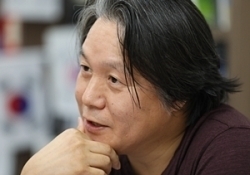 홍익대학교 예술학 석사, 미술학 박사. 현(現) 국립현대미술관 학예연구실장, 한국큐레이터협회 회장, 미술평론가. 전(前) 부산비엔날레 전시기획 팀장, 부산시립미술관 큐레이터, 대전시립미술관 학예연구실장, 제주도립미술관 관장. |
YANG Dong-gyu, the Path from 4.3 Art to Peace Art
GIM Jungi, art critic
YANG Dong-gyu, a young man born and raised in Jeju, holds a solo exhibition. After graduating from university, he started his career as an artist working with video and photographic media in a civic organization for the environmental movement, debuted as a video director 15 years ago, and has been a full-fledged photographer for the past 10 years. He has selected representative works from his many creations in the course of his career and published a photo book and holds a solo exhibition. "Yang Dong-gyu Solo Exhibition: Traces" (July 16-August 5, 2021, Position Min Jeju) shows the world of YANG, an artist who has talked about the history and life of Jeju through landscapes and events. The reason for holding his first solo exhibition in Jeju is that YANG was negligent in his own matters, as he has been involved in civic and artistic organizations activities.
As this is YANG's first solo exhibition in Jeju, the exhibition is a condensed version of his ten years of work, from the earliest to the latest. The exhibition space is not large, but YANG makes the most of it. He arranged his representative works in chronological order and presented them with maximum installation elements. In addition to the photographs on the walls, he has used various display techniques, such as hanging photographs from the ceiling, crumpled photographs in three dimensions, and photographs protruding from the walls. The tendency of the work is also to show a variety of styles, including recordability and conceptuality, spatial segmentation and transcription, synesthetic harmony between vision and hearing, and coexistence between past and present.
By presenting a space in which visitors can view his works in a three-dimensional way, which is different from ordinary photographic exhibitions, YANG fully demonstrated his qualifications as a non-genre fusion artist by presenting a space where three-dimensional works can be appreciated differently from ordinary photo exhibitions.
The starting point of YANG's art was to explore <4.3 as a massacre>. He turned the lens of his camera to the ground of Jeju in search of the hidden truth. The series "Excavation of Massacre Site Remains" is a shortcut to the heart of YANG's photographs. "Vacant Land" (2018-21) shows the site of the Jeongtteureu airfield massacre, where a preliminary survey was carried out to excavate the remains. It is a large work, 30 cuts in total and 3 metres long, documenting the moment when a covered-up history emerges from a land that has been buried for decades.
He places two photographs of airplane on either side of the 'Vacant Land'. The photo of an aeroplane flying over a vacant lot at Jeju Airport is titled 'Archaeopteryx' (2017). It was inspired by the poem 'Jeongtteureu Airfield' by poet KIM Su-yeol. The poet writes, "Now, under that black runway where many people get on and off by archaeopteryx every day, there are hundreds of regretful corpses. Thinking of the poet's heart, "Every time I land at the airport, all I can do is lift my legs," YANG places two birds next to a photo of the Jeongtteureu excavation site. Whenever the people of the Korean Peninsula and East Asia visit the tourist resort of Jeju, every time their bodies touch it, they should remember this lyrical lime that the nameless and unburied dead are being trampled under it again.
YANG exhibits large prints of people, objects and landscapes that he has photographed. He is a conceptual artist who invites the archival elements of "photography" into his artistic message and uses them in the aesthetic appropriation. The way in which he appropriates people and things is also linked to the specific context of visual language. The images he creates from such diverse elements as adjacency and estrangement, harmony and contrast, check and balance, enumeration and intersection, make a decisive contribution to positioning his art as more than a photograph, more than a documentary. YANG, who nurtures his art at the site of photography, goes far beyond the narrative conventions of written language and makes highly inventive use of the narrative structures of the visual language of intuitive imagination.
YANG extends his narrative to the aesthetics of editing and placement. Whether it is a landscape shot from a distance at a wide angle, or a close shot, it is the same to bring the subject into the camera's lens. The problem is that the way in which the subject is brought into the print depends on the way in which it is edited and arranged, so that it can be read differently. YANG's photographs focus not on the method of input or output, but on what they contain and how they are edited and arranged. He focuses not only on what to photograph and how to select it, but also on how to present it.
If the main framework of YANG's photography is the landscape as a trace, the element of conceptual art is another framework that complements or replaces it. It exists on the borderline between "Taking Photo", which is about taking pictures of existing things and landscapes, and "Making Photo", which is about arranging things and situations. Often equating the former with honest documentary photography and the latter with artificially arranged photography, YANG's layers extend beyond documentation and arranging into conceptual art. This is because he freely uses two methods, Taking and Making, to reconstruct documentary photographs of the exhumation sites of 4.3 victims and to connect historical objects and daily events into the narrative of Jeju4.3.
YANG reflects on the lives of the 4.3 victims and their families through their living spaces. In his series of 23 works, "Isolated Peace", he visited and interviewed the survivors of 4.3 and captured their places on camera. When he had visited the spaces of ten more victims and their families he noticed the aura of the space where his grandmother, who had lost her husband in 4.3, had been. He has a plan to make a documentary about the people in the future. In the meantime, he mainly focuses on the objects in the space, which are indirectly reflecting on their lives. The photographs of living spaces presented in this exhibition are casual but sharp, images that capture the traces of life.
Photographing interior spaces as a botanist would collect flowers and plants, YANG is a collector of images that capture glimpses of the lives of those who experienced 4.3. Walls, ceilings, sofas, floors, fruit, windows, bedding, curtains, fluorescent lights in closets, mirrors, tableware reflected in mirrors, grandchildren's writings and paper cranes, wallpaper, and other miscellaneous images are presented. Through this delicate emotional solidarity, YANG reflects not only on the historical significance of the 4.3 as an anti-divisive movement during the liberation period, but also on the painful and sad life journey of those who were born and lived on Jeju Island at the southern tip of the Korean Peninsula in the mid-20th century. The fact that YANG, who has been photographing the landscape of Jeju while tracing the traces of 4.3, concentrates on the images of things in this way suggests a partial direction for the future.
In 2018, he drafted a new peace pledge. While touring Okinawa and Taiwan, he peered into the two sides of war and peace that hang over Northeast Asia. In Jeju, Gangjeong was exposed to state violence and the collapse of village communities during the construction of a naval base. In addition, as a strategic military location in Northeast Asia, it is under the threat of potential war. Henoko in Okinawa is the site of a long peace movement, with a huge new Marine base to be built on the island covered by a US military garrison. Kinmen Island in Taiwan is the site of a conflict between the two sides that once fought fiercely against mainland China. A series of island photographs taken in Jeju Gangjeong, Okinawa Henoko, and Kinmen Island, Taiwan, are peace-themed works inspired by the "island rings of fire" that stand out in Northeast Asia as threats of war.
YANG’s new work deals with the DMZ, which is located at the waist of the Korean peninsula. Just as the people of Jeju opposed the division of their country and fought the "4.3 struggle" in 1948, YANG, a descendant of them, links the DMZ, the site of division and war, to the solidarity of Jeju, Okinawa and Taiwan, and develops it into an East Asian peace discourse and practice. It is a path of peace art to extend the Jeju4.3 to the universality of peace on the Korean peninsula, in East Asia and in the world, rather than to the particularity of conflict and massacre on the island.
YANG, with the perspective of Jeju, has evolved into a peace art with a view to the Korean Peninsula and East Asia, and is walking his own path step by step with a visual narrative based on visual language and activist artist identity. As a member of the bereaved family of the 4.3 victims, he is an activist artist who does not fall into the ideology of the artist who is only concerned with his own problems, but who incorporates art into the dynamic life process that promotes social change. YANG's art continues its never-ending struggle towards the time when Jeju4.3 would be rewritten not as a massacre, but as a history of struggle against oppression, and towards a future where the Jeju narrative is developed into Peace Art for the Korean Peninsula, Okinawa, Taiwan and East Asia.
The attraction of this exhibition is that we can see how YANG slowly builds his own world and is positioned as a mid-career artist. For the past ten years, he has been living as a practical artist, capturing the places on Jeju Island with his camera. Starting from his documentary work on the environmental movement and Jeju4.3, he has moved on to a world of deeper interpretation. Influenced by literary genres such as poetry and novel, he has acquired the language of conceptual art in the process of deconstructing and reconstructing the documentary nature of photography. He also took a new path in order to link the particularities of Jeju with the universality of the Korean Peninsula and East Asia. It is a path of Peace Art, not as a narrative of a specific time and space, but as a practical solidarity that can be shared in a more extended time and space.
ヤン・ドンギュ、 4.3 芸術から平和芸術への道
キム•ジュンギ(金俊起) 美術評論家
済州で生まれ育った青年ヤン•ドンギュが個展を開催中だ。彼は大学卒業後、環境運動市民団体で映像と写真媒体を扱うアーティストとして出発し、15年前に映像監督としてデビューし、10年前からは写真家として本格的に活動してきた。彼はキャリアの過程で創作した数多くの作品から代表作を選んで写真集を出版し、個展を開く。<ヤン•ドンギュ個展:跡>(2021年7月16日-8月5日、ポジション・ミン済州)は、風景とできごとを通して済州の歴史と生活を語ってきたアーティスト・ヤン•ドンギュの世界を知ることができる展示である。10年余のキャリアにもかかわらず、済州で初めての個展となるのは、ヤン•ドンギュがアーティスト活動以外に市民団体と芸術団体の活動に邁進したため、自分自身のことにかまけるのを疎かにしていたせいである。
済州島での初個展であるだけに、本展には初期から最新までのヤン•ドンギュの10年の時間が凝縮して盛り込んである。 広くはない展示会場を、ヤン•ドンギュは空間を最大限に生かして用いる。時系列に代表作をまとめ、最大限のインスタレーション的要素で演出したのだ。壁に設置した写真だけでなく、天井から吊るした写真、しわくちゃにして立体にした写真、壁から突き出て吊った写真など、様々な演出技法を用いている。作品の性向も記録性と概念性、空間的分節と書写の連結、視覚と聴覚の共感覚的調和、過去と現在の共存など、多様なスタイルで時空間を縦横無尽に駆ける演出を披露した。一般的な写真展示とは異なる立体的な作品鑑賞が可能な空間を提示することで、ヤン•ドンギュは脱ジャンル的な融合芸術家としての資質を十分に発揮した。
ヤン・ドンギュの芸術の出発点は<虐殺としての4.3>を探ることだった。彼は隠蔽された真実を求めて、カメラのレンズを済州の地面に向けた。「虐殺現場遺骨発掘」連作は、ヤンの写真の核心を見抜く近道である。「空き地」(2018-21)は、ジョントル飛行場の虐殺跡で遺骸発掘のために事前測量された現場を撮ったものだ。それは全30カット、長さ3メートルの大作で、数十年間埋められていた土地から隠れた歴史が出現する瞬間を記録した写真だ。
彼は「空き地」の左右に飛行機の写真2枚を並べる。済州空港の「空き地」の上を飛ぶ飛行機の写真は「始祖鳥」と題されている(2017)。これは詩人キム•スヨルの『ジョントル飛行場』という詩に着想した作品だ。キム詩人は「今、多くの人が毎日始祖鳥で乗り降りするあの真っ黒な滑走路の下に、数百の無念の死骸がある」と書いた。「空港に着陸する度、私は自分の足を持ち上げることしかできない」という詩人の心を思い、彼はジョントル発掘現場の写真の隣に2羽の始祖鳥を置く。韓半島と東アジアの人々が観光地済州を訪れる度、彼らの体が済州に触れる度、名もなく葬られることもなかった死者たちがその下で再び踏み砕かれているというこの痛恨の敍事を記憶したい。
撮影した人物や事物、風景などを大型プリントで展示するヤンは、写真のアーカイバルな要素を彼の芸術的メッセージに組み込んで独特の美学を駆使するコンセプチュアルなアーティストだ。彼が人物と事物を取り込む方法は、視覚言語固有のコンテキストとも繋がっている。隣接と疎隔、調和と対比、牽制と均衡、羅列と交差など多様な要素から作り出されるイメージは、ヤンの芸術を、写真を超えた写真、ドキュメンタリーを超えたドキュメンタリーと位置づけるのに決定的な貢献をしている。撮影の現場で芸術作品を育てるヤンは、文字言語の叙事的限界をはるかに越えて、直観的な想像力という視覚言語のナラティブをきわめて創意的に駆使する。
ヤンは編集と配置の美学に彼の叙事を展開する。遠くから広角で撮る風景写真や、ぐっと近づく現場写真、どれも対象をカメラのレンズの中に引き入れるのは同じだ。問題は、引き入れた対象を印刷する際の編集術と配置術によって、読解の差異が生じることにある。ヤンの写真は入力や出力の方法でなく、そこに何を盛り込むか、そして対象をどのように編集して配置するかに焦点を合わせる。「何を撮ってどのように選び出すか」ということにとどまらず「どのように見せるか」に関心を集中させる。
ヤンの写真の大きな枠組みが痕跡としての風景にあるとすれば、コンセプチュアル・アートの要素は、その枠組みを補完または代替するもう一つの枠組みだ。それは存在する事物や風景を「撮る写真Taking Photo」と、事物や状況を演出する「作る写真Making Photo」の境界線上に存在する。しばしば人は、前者を正直な記録写真として、後者を人為的な演出写真として等置するが、ヤンのレイヤーは記録と演出を超えたコンセプチュアル・アートへと展開する。彼はTakeとMake、2つの方法を自由に駆使し、4.3犠牲者の遺体発掘現場の記録写真を再構成し、歴史的事物と日常のできごとを済州4.3の叙事へと連結する。
ヤンは4.3犠牲者と遺族の生活空間を通して彼らの人生を省察する。「孤立した平安」連作23点は、4.3の生存犠牲者たちを訪ねてインタビューし、彼らの居場所をカメラに収めたものである。彼は4.3で夫を失った自分の祖母がいた空間のオーラに気づき、再び10人余りの犠牲者遺族と会った。作品としてはまだ発表していないが、いずれは人物ドキュメンタリーを制作する予定がある。その時までは、室内のモノを通して彼らの人生を間接的に省察することに主眼を置いている。今回の展示で発表される生活空間の写真は、さりげなくも鋭く、生の痕跡をとらえたイメージとなっている。
植物学者が草花を採集するようにして室内空間を撮影したヤンは、4.3を経験した人々の生活の片鱗を捕捉するイメージの収集家だ。壁、天井、ソファー、床、果物、窓、布団、カーテン、クローゼットの蛍光灯、鏡、鏡に映った表具、孫たちの文と折り鶴、壁紙など、雑多なイメージが提示される。このような繊細な情緒的連帯を通じて彼は、4.3という事件が解放期の反分断運動として歴史的意味を持つという点だけでなく、20世紀半ばに韓半島南端の済州島に生まれ生きてきた人々の辛酸で切ない人生の旅路であることをも省察する。4.3の痕跡を追跡しながら済州の風景を撮ってきたヤンが、このように事物のイメージに集中することから見て、今後の方向性を部分的に推測できよう。その変化の端緒として注目すべき流れが次の作業に見えているのだ。
2018年以降、彼は新しい平和の誓詞を書き起こした。沖縄、台湾を踏査しながら、彼は北東アジアに垂れこめる戦争と平和の両面をのぞき込んだ。済州島の江汀は、海軍基地の建設過程で国家暴力にさらされ、村落共同体の崩壊を経験した。さらに北東アジアの軍事的戦略の要衝として潜在的な戦争の脅威に直面している。沖縄の辺野古は米軍の駐屯地に覆われた沖縄島に新たに建設しようとする巨大な海兵隊基地で、長い平和運動の現場である。台湾の金門島はかつて中国大陸と激しい戦闘を繰り広げた<両岸>の対立現場だ。済州江汀と沖縄辺野古、台湾金門島でとらえた島写真連作は北東アジアで際立って戦争の脅威を抱える"島の火山帯"に材を得た平和をテーマとする作品だ。
ヤンが発表を始めた新作は、韓半島の腰部にあるDMZを扱ったものだ。1948年、解放された祖国が分断国家であってはならないという一念で済州道民が分断に反対し、4•3<抗争>を繰り広げたように、彼らの子孫であるヤンは分断と戦争の現場であるDMZを、済州と沖縄と台湾の連帯へと結びつけ、東アジア平和談論と実践に展開する。それは済州の4.3を、島における抗争と虐殺の特殊性で規定するのではなく、韓半島と東アジアと世界の平和という普遍性に拡張するための平和芸術の道である。
ヤンは済州の視点を基礎に、韓半島と東アジアを視野に入れた平和芸術へと進化し、映像言語に基づいた視覚ナラティブと行動主義アーティストのアイデンティティを手に、一歩一歩自分の道を歩んでいる。4.3犠牲者の遺族として4.3芸術活動を続ける彼は、自分の問題にだけ没頭する芸術家イデオロギーに陥ることなく、社会変化を促す運動的生の過程で芸術をくみ上げる行動主義アーティストだ。済州4.3を反乱と討伐による虐殺事件ではなく、弾圧に立ち向かった抗争の歴史として書き直す「正明の時」に向かって、さらには済州の叙事が韓半島と沖縄、台湾と東アジアの平和芸術へ展開する未来に向けて、ヤンの芸術は終わらない抗争を続けている。
本展の魅力は、青年作家ヤン•ドンギュがゆっくりと自分の世界を構築し、中堅作家に位置づけられる過程を見ることができる点にある。彼は過去10年間、済州島という生活の場をカメラに収める実践的なアーティストとして生きてきた。環境運動や済州4.3に関するドキュメンタリーワークから出発した彼は、いっそう深みを増す解釈の世界へと進んだ。詩や小説といった文学ジャンルの影響を受け、写真の記録性を解体して再構成する過程で、コンセプチュアル・アートの言語を獲得した。さらに彼は、済州島の特殊性を韓半島と東アジアの普遍性と結び付けるため、新たな道に突き進んだ。それは特定の時空の叙事ではなく、より拡張された時空間において共感しうる実践的な連帯としての平和芸術の道である。

